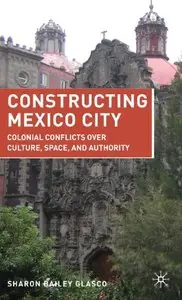Constructing Mexico City: Colonial Conflicts over Culture, Space, and Authority by Sharon Bailey Glasco
Palgrave Macmillan; 1 edition | June 15, 2010 | English | ISBN: 0230619576 | 224 pages | PDF | 2 MB
Palgrave Macmillan; 1 edition | June 15, 2010 | English | ISBN: 0230619576 | 224 pages | PDF | 2 MB
Constructing Mexico City: Colonial Conflicts over Culture, Space, and Authority examines the spatial, material, and cultural dimensions of life in eighteenth-century Mexico City, through programs that colonial leaders created to renovate and reshape urban environments. Focusing particularly on the administration of Viceroy Juan Vicente de Güemes Pacheco y Padilla, the second count of Revillagigedo (1789-1794), this book considers how the Spanish Bourbon reforms were re-imagined at the local level in Mexico City, within the context of the built environment and the people who define, occupied, and used space within the colonial capital. The plans and ideas of Revillagigedo place him within a broader network of colonial bureaucrats who sought to improve and transform the Spanish Empire in the age of Enlightenment.
As a representative of these Bourbon reforms, Revillagigedo lived among the subjects of his plans. However, these urban groups: Indians, Spanish elites, and those of mixed race background, were not simply passive recipients of his agenda, but contested and questioned his vision of a modern urban milieu. By focusing on the tensions between the colonial state and its citizens within the realm of urban planning and reform, this study reveals various points of conflict and discord not only over how various social groups defined and shared the public spaces in the city, but also how they understood their place within a wider colonial system. Bailey Glasco, drawing on research from numerous archives in Mexico City, sheds new light on the critical roles that urban planning and renewal played in the social and cultural dynamics of the city, as well as how it anticipated early definitions of modern Mexican identity.



